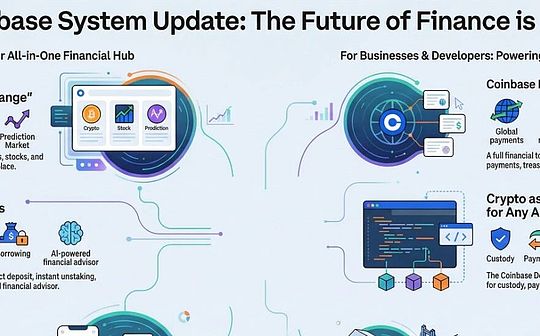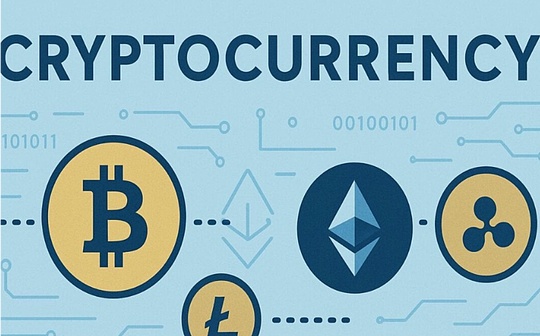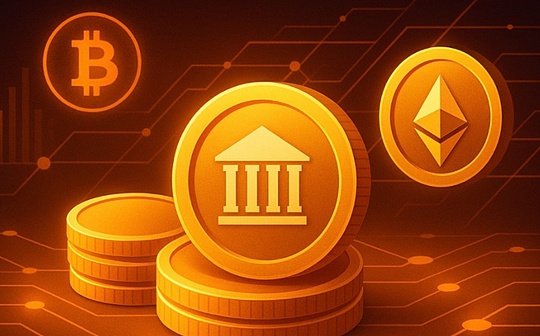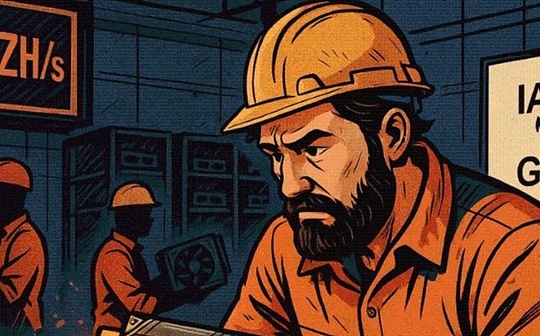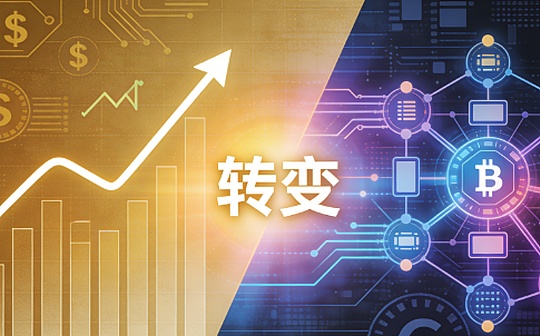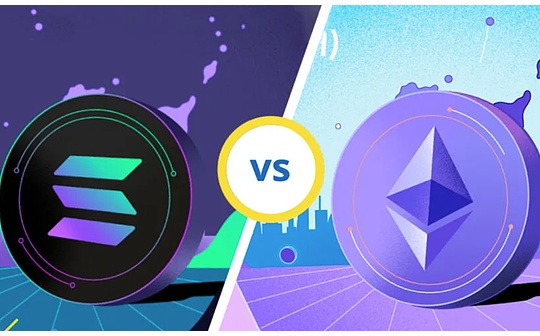
Author: Kyrian Alex Source: Medium Translation: Shan Ouba, Bitchain Vision
For a long time, the demand for blockchain technology for expansion solutions has been a controversial topic.
I think everyone knows that with the development of the blockchain network, the transaction volume (TPS) has become a key issue per second.The current capacity of major blockchains such as Bitcoin and Ethereum is not enough to handle the required transaction volume.
For example, Bitcoin is dealt with about 7 transactions per second, and Ethereum is processed about 15 transactions per second.In contrast,VISA is dealt with about 1,700 transactions per second.Without extended solutions, the blockchain cannot compete with traditional financial systems and achieve large -scale adoption.
What if we look at the actual cost of these transactions?
As more and more people use the blockchain at the same time, the transaction costs become very high, and then during the peak use period, it will hinder users and make small transactions unrealistic.For example, during the DEFI boom in 2020 and 2021, Ethereum GAS soared, and even small transactions became too expensive.
>
>
How to solve the problem?
We solve this problem by introducing expansion solutions.
Extension solutions are a technology that aims to improve blockchain network capacity and efficiency to deal with more transactions.The main goal of the expansion solution is to increase the amount of network throughput (measured by the number of transactions per second (TPS)), while maintaining or improving security, decentralization and cost benefits.
Extended solutions are essential for reducing transaction costs, so that blockchain technology can be used for wider audiences and can be used for daily use.Slow trading time and high costs will reduce user experience, hinder the use of new users, and restrict the availability of decentralized applications (DAPPS).
In order to attract and retain users, the blockchain network must provide seamless, fast and economic efficient transactions, which can be achieved through an effective expansion solution.
>
Today, we will explore how different networks cope with these challenges, especially through ZK Rollups and ZK Compression on the Ethereum.Both technologies aim to enhance scalability, but they achieve this goal in different ways, reflecting the unique design concepts and priority matters of their respective ecosystems.
What is ZK Rollups?
ZK-Rollups is the L2 extension solution. By migrating the calculation and status out of the chain, the transaction data is stored on the chain in the form of bundled batch to improve the scalability of the blockchain.
They use the encryption proof of zero -knowledge proof to prove the effectiveness of these bundled transactions without revealing the actual data.This not only ensures the security of the Ethereum main network, but also makes the transaction on the side chain faster and cheaper.
>
How do they work?
-
The serial device batch the transaction under the chain.
>
-
Sequencer generates ZK-SNARK (simple non-encrypted knowledge demonstration) proof, which is a compact encryption certificate that can verify the effectiveness of transactions without leaking all details.
-
Proof and transaction data are submitted to the main network of Ethereum.
-
Anyone can verify proof on the main network to ensure that the transaction is effective.
-
If there is controversy, anyone can submit the original transaction data to settle the chain to use the strong security of Ethereum.Rollup contains an encryption certificate (specifically zero -knowledge certificate) to verify the correctness of bundling transactions.Ethereum network only needs to verify this proof, instead of verifying each transaction, which greatly reduces the calculation load.
-
The transaction is carried out in the form of a chain in the summary.
-
Generate zero -knowledge proof to confirm the effectiveness of aggregation transactions.
-
Proof and minimum summary data are submitted to the Ethereum main network for verification.
-
After the verification is successful, the state on the main network of Ethereum will be updated to reflect the summary transaction
>
What is zk compression?
ZK Compression is a technology that stores the privacy of the “fingerprint” (hash) that only keeps the data on the chain while maintaining the privacy of the data to reduce the data storage cost on the Solana blockchain.
“ZK” in ZK Compression represents zero knowledge, indicating that the privacy of compression data is retained.This method helps greatly reduce the amount of data that requires storage on the chain, thereby reducing the storage cost of developers.
>
How does ZK Compression play a comprehensive role?
ZK Commpression uses zero -knowledge (ZK) technology to reduce the status costs on Solana, that is, the cost of storing and maintaining data from the blockchain and maintaining account balance and smart contract storage.
The following is a detailed decomposition of its working principle:
-
The data of each account is compressed into a unique hash value.This hash includes not only the information of the account, but also its position in the state tree to ensure its uniqueness.This hash is stored in the leaf nodes of the state tree.
-
ZK ROLLUPS: Transaction execution and status are stored on the auxiliary chain independent of the Ethereum main network.The auxiliary chain sends promises and certificates to the Ethereum main network.
-
ZK compression: All transactions and status storage occur directly on the 1st (L1) chain, that is, solana in this article.It does not involve a separate auxiliary chain.
-
ZK Rollups: Only submit the encryption certificate and the least abstract data to the Ethereum main network for verification.This method minimizes the computing load of the main network.
-
ZK compression: Only the “fingerprint” (hash) and the corresponding ZK proof of compression data will be stored on the solana blockchain.This greatly reduces the amount of data stored on the chain, thereby reducing the storage cost.
-
ZK Rollups: Use ZK-SNARK (simple non-encrypted knowledge argument) to ensure the effectiveness of transaction without disclosing detailed transaction data.This can not only protect privacy, but also protect the security of Ethereum main network.
-
ZK compression: combine data compression with ZK to optimize the blockchain storage, and at the same time proves the integrity of compression data mathematically.It ensures that the unzipment data matches the original data without leaking the content, thereby protecting privacy.
-
ZK Rollups: Consider the second layer (L2) expansion solution, because they uninstall the transaction execution and status management to the secondary chain, thereby enhancing the scalability and reducing the cost of the main network.
-
ZK Compression: It does not belong to Layer 2 Rollup, but the upgrade of the Solana Layer 1 chain, which aims to directly improve data storage efficiency.It can optimize the storage cost without introducing a separate execution layer.
>
2. Status tree is a data structure similar to the Merkle tree. Among them, each node is the hash value of its sub -node.Summary of all account information and data of the Status tree, which compresses it into a single top hash value, is called the status root.
3. State root, that is, the top layer of the state tree is stored on the blockchain.This root is the fingerprint of the entire state tree to ensure the integrity and integrity of all data in the tree.
4. Detailed account data is not directly stored on the blockchain.It is used as a cheaper Solana ledger space.Only the status roots and some basic metadata are stored on the chain, while ensuring data security, it greatly reduces the storage cost.
5. In order to ensure the integrity and authenticity of the compression data, ZK Compression uses zero-proofs.These proofs can verify the accuracy and completeness of the data without leaking the actual content of the data, so as to ensure that it can be kept safe and verified even if compressed data.
>
Please note that ZK Compression is not an L2 solution, but an upgrade to improve the data storage efficiency of Solana.
ZK Compression is not a summary of the second layer. Because unlike the L2 solution, the transaction execution and status storage in ZK Compression is performed directly on the 1st (L1) chain, which is solana in this example.
The key difference is the management position of execution and status.Use ZK Rollups to occur on the auxiliary chain, and the auxiliary chain regularly sends commitments and proofs to the main L1 chain.In contrast, ZK Compression retained all execution and status on Solana itself, not on a separate chain.
This fundamental difference means that although ZK Rollups uninstalls some processes to the auxiliary layer to enhance scalability, ZK Compression optimizes data storage directly on the main blockchain without creating a separate execution layer.
The main differences between Ethereum and Solana’s ZK Rollups and ZK Compression
The main differences between the ZK Rollups and the ZK Compression on the Ethereum and the ZK Compression on Solana are fundamentally based on their enhancement of the scalability and optimization of the data storage of the blockchain:
1. Execution and status management:
2. Data processing on the chain:
3. Privacy and integrity:
4. The nature of the solution:
in conclusion:
All in all, the two views of extension emphasize the importance of balance methods to ensure that the blockchain network can achieve sustainable development while maintaining its core principles.
Solana’s achievements in this regard provided a convincing case for the entire blockchain industry to adopt advanced expansion solutions, paving the way for wider range of adoption and innovation.


